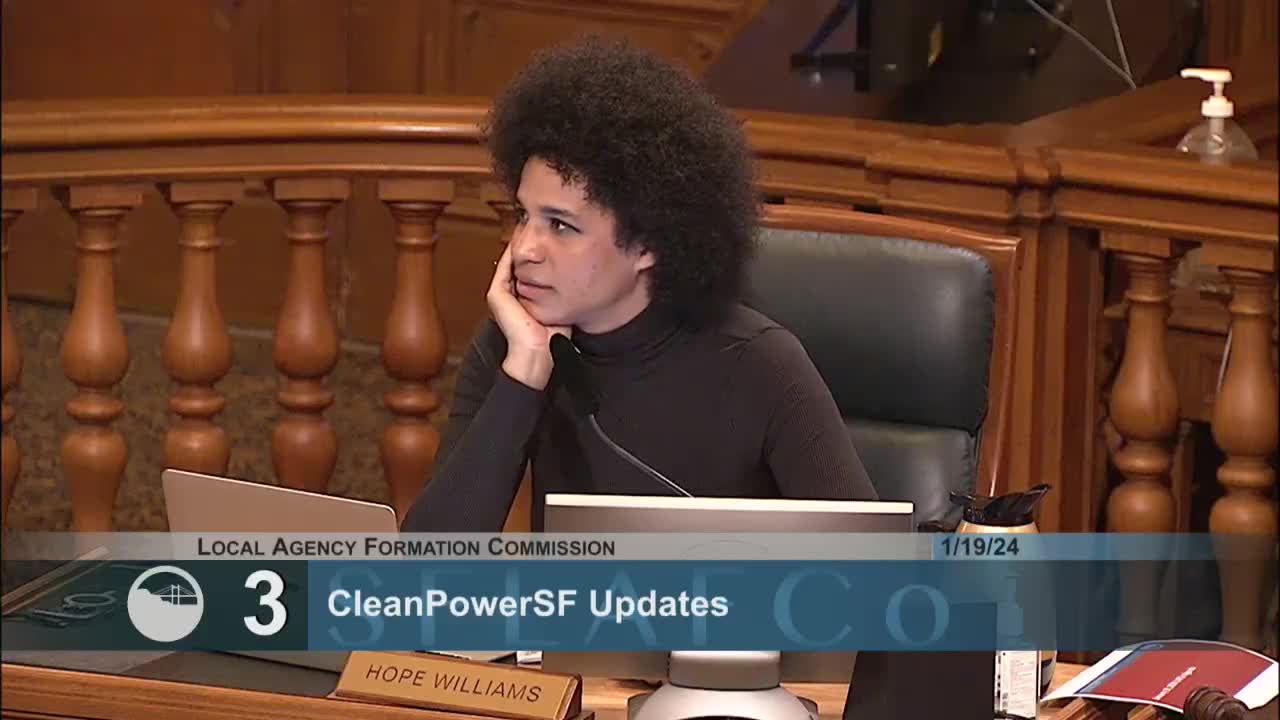California Public Utilities Commission reviews net energy metering for multifamily solar customers
January 19, 2024 | San Francisco City, San Francisco County, California

This article was created by AI summarizing key points discussed. AI makes mistakes, so for full details and context, please refer to the video of the full meeting. Please report any errors so we can fix them. Report an error »

In the heart of San Francisco's bustling city hall, discussions unfolded around the future of solar energy and community initiatives, reflecting a pivotal moment for residents and environmental advocates alike. The California Public Utilities Commission (CPUC) has been at the center of these discussions, particularly regarding recent changes to net energy metering, which have sparked both concern and curiosity among stakeholders.
Last year, the CPUC made a significant decision that effectively ended traditional net energy metering, a system that allowed solar customers to receive credits for the energy they generated and fed back into the grid. This shift has raised alarms, especially among multifamily housing residents who may face new costs associated with using the solar energy produced on their rooftops. The CPUC is currently working on a modified version of net metering specifically for these communities, aiming to create a more sustainable model for solar energy distribution.
Commissioner Singh highlighted the importance of community solar programs, which are designed to provide green energy options to disadvantaged communities. The CPUC had previously opened a proceeding to review these programs, including green tariff alternatives, but the complexity of the original designs has hindered their effectiveness. Stakeholders, including Clean Power SF and other community choice aggregators (CCAs), are advocating for a simplified approach to ensure these programs can run smoothly and benefit those who need them most.
As the meeting concluded, there was a palpable sense of urgency among the participants. The discussions underscored the need for clarity and action from the CPUC, as residents and advocates await updates on how these regulatory changes will shape the future of solar energy in San Francisco. The outcome of these proceedings could significantly impact the city’s commitment to sustainability and equitable energy access, leaving many eager to see how the situation unfolds.
Last year, the CPUC made a significant decision that effectively ended traditional net energy metering, a system that allowed solar customers to receive credits for the energy they generated and fed back into the grid. This shift has raised alarms, especially among multifamily housing residents who may face new costs associated with using the solar energy produced on their rooftops. The CPUC is currently working on a modified version of net metering specifically for these communities, aiming to create a more sustainable model for solar energy distribution.
Commissioner Singh highlighted the importance of community solar programs, which are designed to provide green energy options to disadvantaged communities. The CPUC had previously opened a proceeding to review these programs, including green tariff alternatives, but the complexity of the original designs has hindered their effectiveness. Stakeholders, including Clean Power SF and other community choice aggregators (CCAs), are advocating for a simplified approach to ensure these programs can run smoothly and benefit those who need them most.
As the meeting concluded, there was a palpable sense of urgency among the participants. The discussions underscored the need for clarity and action from the CPUC, as residents and advocates await updates on how these regulatory changes will shape the future of solar energy in San Francisco. The outcome of these proceedings could significantly impact the city’s commitment to sustainability and equitable energy access, leaving many eager to see how the situation unfolds.
View full meeting
This article is based on a recent meeting—watch the full video and explore the complete transcript for deeper insights into the discussion.
View full meeting
